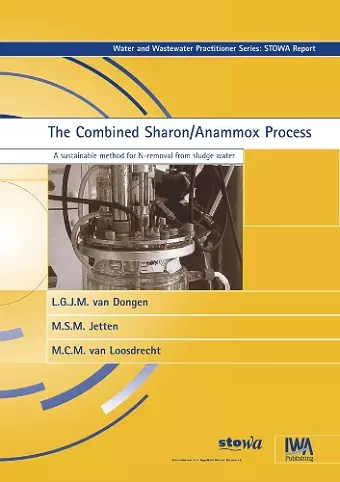The Combined Sharon/Anammox Process
Mark C M van Loosdrecht author L G J M van Dongen author M S M Jetten author
Format:Paperback
Publisher:IWA Publishing
Published:30th Sep '01
Currently unavailable, our supplier has not provided us a restock date

Wastewater treatment management, alongside many other industries, is seeking to attain a higher degree of sustainability for its processes by focusing on new technologies which minimise the consumption of resources or even recover them from the wastewater. Conventional removal of ammonium requires usually large amounts of energy for aeration and organic carbon for denitrification. This report focuses on making the nitrogen-removal process more sustainable. This can be achieved by a partial oxidation of ammonium to nitrite, after which the nitrate produced can be converted into nitrogen gas with the rest of ammonium under anoxic conditions. The treatment of nitrogen-rich water can be carried out beneficially by a combination of the Sharon process with the Anammox process. In this combined process less than 50% of the aeration energy is needed, no COD is required and an insignificant amount of sludge is produced. In this Report the potential of using this technology for the treatment of water arising from sludge treatment at a municipal wastewater treatment plant (WWTP) is evaluated and the results of the operation of the system are described in detail. This reject water contains a significant fraction of the N-load towards the wastewater treatment plant. The results are used in an economic evaluation of a potential full scale installation. The Combined Sharon/Anammox Process Report will provide an invaluable source of information for all those concerned with the efficient and sustainable treatment of wastewater including plant managers, process designers, consultants and researchers.
The Combined Sharon/Anammox Process LGJM van Dongen, MSM Jetten, MCM van Loosdrecht " Every now and then a new book opens the door on an application of technology which does indeed, appear to fulfil sustainability ideals, achieve waste recovery goals and do so at a cost in energy consumption comparable with that from existing processes. Conventional removal of ammonium requires usually large amounts of energy for aeration and organic carbon for denitrification. This report focuses on making the nitrogen removal process more sustainable. This can be achieved by a partial oxidation of ammonium to nitrite after which the nitrate produced can be converted into nitrogen gas with the rest of ammonium under anoxic conditions. According to the authors, the treatment of nitrogen rich water can be carried out by combining the Sharon process with the Anammox process - specific chapters describe these two systems individually and then in combined form. The result achieved is a 50 per cent reduction in the aeration energy needed, only a small amount of sludge is produced and no COD is required. Importantly, to achieve wider acceptance of this technology, the authors examine the potential for using it for the treatment of water arising from sludge removal at a municipal wastewater treatment plant. Results from operation of the combined system are detailed and subsequently used to evaluate the economics for full scale installation." Published in Water, 2002
ISBN: 9781843390008
Dimensions: 234mm x 156mm x 18mm
Weight: unknown
74 pages
UK ed.